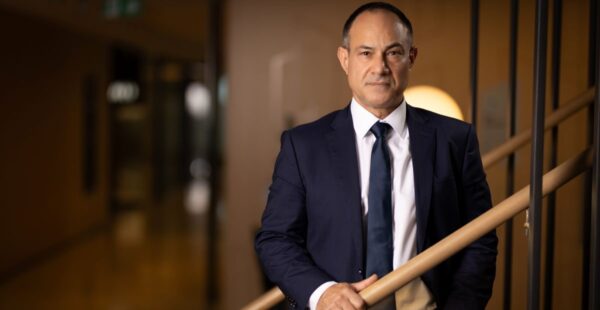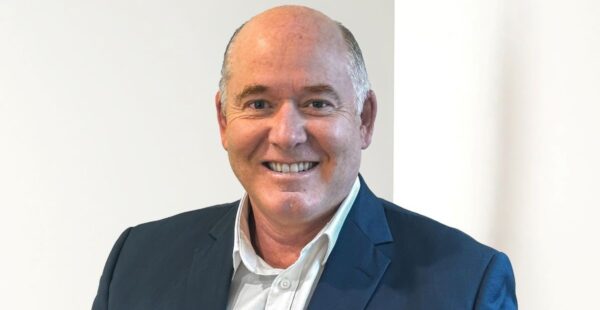Appreciating value: Unearthing that rare gem in the big caps

Value investing is often compared – perhaps unflatteringly – to a spirited bargain hunt. Yet few are likely to find that rare jewel simply rummaging through the middle aisle bargain bin. Like any savvy shopper seeking out that undervalued and underappreciated gem amongst the rough, a successful value investing approach demands considerable nuance, a focused strategy and a deep well of market knowledge.
“For a lot of people, value investing just means buying something because it’s got a low price-to-book, low earnings or a high dividend yield. However, we think that’s a pretty low-quality way to invest,” says Aaron Binsted, portfolio manager and analyst on Lazard’s Australian Equity team.
“Unless we have confidence in the long-run earnings power of a business, just buying something because it’s on a low P/E [Price-to-Earnings] is not really something that’s interested us.”
Broadly, a value investing approach seeks to identify stocks that have been overlooked by the market and, as a result, trade below their true and under-realised value.
For Binsted, a successful value investing strategy demands a forensic, company-by-company approach, with a considered, long-term view of a company’s growth prospects; it is an approach that fully appreciates the difference between a fundamental valuation and simply a bargain buy.
“What a business earns in a particular year is not always the best indication of what it can earn in the long run.”
Markets, he notes, can often get captured by a company with a sudden – for better or worse – change in fortunes rather than appreciating its fundamentals.
“Too often they get carried away, getting overly excited or really depressed.”
The Lazard Australian Equity Fund (W Class), winner of the Fund Manager of the Year 2024 award in the Australian Equities – Large Cap category, embraces what Binsted defines as a “bottom-up” fundamental valuation approach.
“What that means is we think we’re pretty good at working out what the long-run core earnings for businesses are,” he says.
“We really look forward a few years and we have a core capability in looking at that underlying business earnings and then assessing a correct multiple to pay for that.
“That really is the kind of fundamental engine that drives all our processes.”
The fund is primarily focused on the mid-cap space, actively seeking out those long-term, sustainable core earnings of businesses in its investible universe.
“We’ve had external consultants review us, and they’ve all said that our key competitive advantage is working out those long-run core earnings.”
“That’s something that much fewer people are doing and gives us a differentiated advantage.”
This has helped to steer the fund through challenging economic climes.
“Particularly in 2022, the vast majority of people’s portfolios really struggled – whether it was bonds, equities, private equity, or venture cap.
“Our portfolios performed really strongly and are often one of the few things that we’re working for clients and that ability to add performance to boost portfolios in difficult times really is attractive to people.”
In the three years to 31 Oct 2024, the fund returned 8.43% p.a. to investors, outshining the benchmark S&P/ASX200 index (8.01% p.a.) and its peers (averaged at 6.65% p.a.).
Tactical investments in defensive assets such as Waypoint REIT and companies with “dependable earnings” such as Coles, Suncorp and IAG, buttressed the fund during this challenging period.
“These are all companies that really have dependable earnings and even some earnings momentum that at the time wasn’t fully appreciated by the market.”
Observing considerable overvaluation in Australia’s ‘big four’, Binsted notes that the fund has moved to an underweight position on banks.
“We just think that the valuations are very hard to justify. Does that mean they’re going to fall next month? Probably not. But on a long run view, we think the prospects for returns are pretty low.”
While recognising “more opportunities than there have been historically”, the mid-cap fund has also taken a “slow and cautious” view on healthcare, with still a “lot of underlying negative trends impacting that sector”.
Lazard remains sanguine on energy, though there has been some recent recalibration following earlier gains.
“We had a very big position in 2022 and we took a lot of money off the table when that performed. We’ve got a more modest position there, but we still do like energy, where we [retain]… some big picture portfolio sector exposures.”
While predictions on the future state of the economy are always fraught, for Binsted, embracing a fundamental investment approach and long-term view will deliver for investors.
“My ability to pick where the market’s going to be in 12 months is probably up there with who’s going to be the winner at the Dapto Dogs next Wednesday night.”
He added: “My view and our view is that you can’t predict the economy, and running around calling recessions or a bad debt cycle in banks or whatever is just a fool’s errand.
“But at the same time, you’ve got to be mindful of the economic environment you’re in when you’re placing your bottom-up bets.
“It’s about being mindful of the cycle and having that factored into your portfolio construction, but then really basing your view on a fundamental long-run investment framework for each company.”











So someone in India who isn't licensed provided personalised financial advice and ASIC's response is to tell them to be…
Seeking Regulatory relief from Regulation. Industry Super Funds want to control $1.6 Trillion $$$ and ever growing with almost zero…
If Kalkine has officially been released and operates under a legitimate license to provide general advice, it raises an important…
Not sure what they're seeking regulatory relief from. In my view is they get tickled with a warm lettuce leaf…
Will they ever be named & shamed, fined and banned for life ??? Unlikely hey ASIC & APRA, especially for…